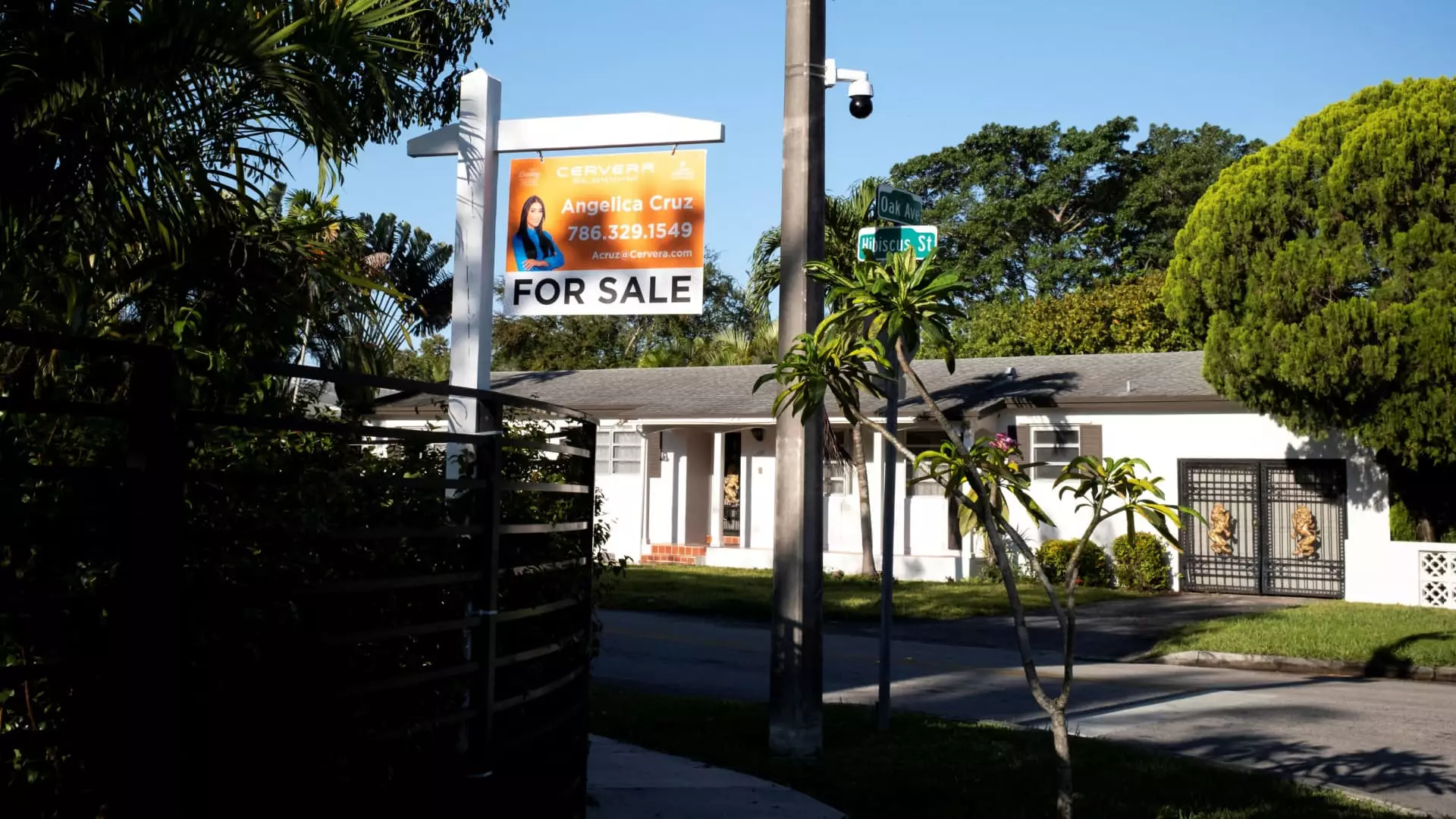The arrival of spring typically brings with it the blossoming of the housing market, yet this year, we are greeted instead by a significant downturn. Reports indicate that sales of previously owned homes plummeted by 5.9% in March, reaching a low of 4.02 million units on a seasonally adjusted annualized basis—the worst performance for the month since 2009. Such a drastic drop isn’t just a clear signal of stagnation; it reveals an unspoken truth about the state of the housing market and the broader economic landscape.
With fears about the economy lurking in the background, many potential homebuyers are understandably hesitant. In fact, across all regions, home sales have fallen, with the Western region taking the hardest hit with a staggering decline of over 9%. While the Rocky Mountain states within this region exhibited some resilience, buoyed by robust job growth, it appears that their success is an exception rather than the rule. As home buying becomes increasingly costly and complicated, we must question whether our economy can sustain its growth, or if it is merely a house of cards waiting to collapse.
Mortgage Rates: A Barrier to Home Ownership
High mortgage rates are the elephant in the room that nobody is daring to confront. As the National Association of Realtors (NAR) pointed out, a fixed-rate mortgage on a home has remained stubbornly above the 7% threshold for a significant stretch, creating dire affordability challenges. As of late February, when rates were still climbing, aspiring homeowners realized they were trapped in a vicious cycle of waiting; the promise of lower rates isn’t strong enough to tempt potential buyers into a market that offers seemingly insurmountable hurdles.
Lawrence Yun, NAR’s chief economist, has highlighted the very real implications this stagnation could have on economic mobility. A historical low in residential housing mobility reveals that people are unable to move freely due to homeownership constraints. Is this merely an economic statistic, or are we witnessing a more profound social issue driven by wealth inequality? In a time when we should be thriving, many find themselves anchored to unsellable homes, unable to take advantage of better work opportunities or improved living standards elsewhere.
A Surging Inventory Yet Drifting Prices
Ironically, with the ebbing sales figures, inventory levels have surged. By March, the number of available homes for sale reached 1.33 million units—an increase of nearly 20% from the same month last year. While an ample inventory might suggest a favorable market for buyers, this is not the case; the current supply is merely a stone’s throw away from being classified as lean, with a six-month supply considered balanced. Instead of stimulating the market, this surge in inventory is contributing to price stagnation.
The median home price settled at $403,700 for March, which, while still an all-time high for the month, marked only a 2.7% increase year-over-year—the smallest gain we’ve seen in months. As prices stagnate amidst climbing inventory, it forces us to ask where this leaves the average homebuyer. The glimmer of wealth generation in real estate—where each percentage point gain adds $500 billion to household balance sheets—is overshadowed by the reality of affordability and the fallout from poor job security.
The Struggle of First-Time Homebuyers
As we dissect these troubling trends, the plight of first-time homebuyers becomes increasingly apparent. Making up only 32% of the market—a number that has been historically closer to 40%—these individuals symbolize the dream yet to be realized for many. The ongoing challenges—high mortgage rates, diminished inventory, and rising prices—combine to create a storm that hampers the efforts of those who are just trying to break into the market.
What about the all-cash buyers? Their numbers have declined from 28% to 26%, causing concern about the increasingly investment-driven nature of the housing sector. While investors continue to play a significant role, accounting for 15% of all sales, the reality remains that wealth accumulation is increasingly disconnected from the average American experience.
As we look towards the near future, the increase in contract cancellations foreshadows a further chilling effect on an already lackluster market. With economic uncertainties reshaping the landscape, the prospects do not appear promising. Each statistic, from the declining sales to the passive reactions of potential buyers, paints a dire picture of a housing market in distress. It becomes vital for policymakers and stakeholders to address these deep-rooted issues—before it’s too late.

